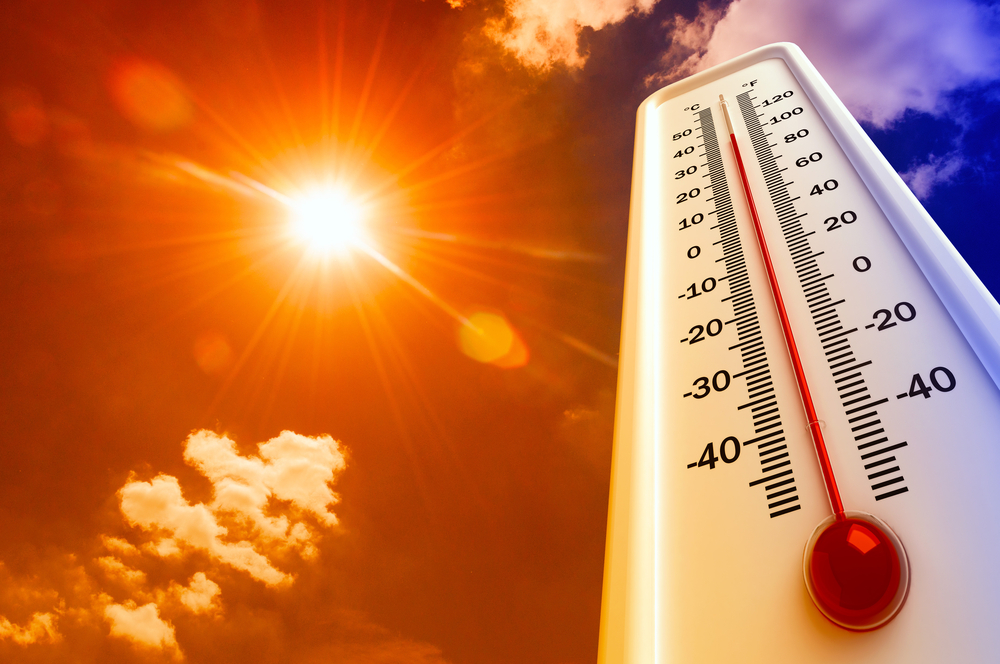You know keeping your vegetable garden watered in the heat is important. What you might not know, however, is heat can cause an array of problems you may not be aware of.
Powdery Mildew
Powdery mildew loves hot humid weather and can be a big problem—particularly this time of year when our young vegetable plants are getting bigger and there is less air circulation around them. (This is why I always try to space my plants as far apart as I can.)
Cucurbits (cucumbers, squash, pumpkins, melons) are particularly vulnerable, so look for little white powdery spots to appear on the foliage. Eventually, those spots will grow to cover most of the leaf.
Powdery mildew thrives on new tender growth, so if it shows up, avoid applying fertilizer until it’s under control. Believe it or not, a study at the University of Connecticut found that a mixture of 40% milk and 60% water as a spray is fairly effective when powdery mildew first appears. Neem oil can also be used, but be sure to spray when temperatures are below 90 degrees to avoid foliar damage.
Other Heat Created Problems
Besides dealing with powdery mildew, some vegetables—like beans—will abort their flowers when temperatures reach into the 90s. Other vegetables—tomatoes, pepper, and eggplants, in particular—will have trouble setting fruit because heat can damage the pollen. If your tomatoes have flowers but refuse to set fruit, look no further than Mother Nature.
How to – and When Not to – Use a Light Shade Cloth
If heat persists, you may even want to invest in light shade cloth to give your plants a break—be sure to suspend it about a foot or so above your plants so as to allow plenty of air circulation. And I probably would not use it if I had a problem with powdery mildew.
A Soaker Hose is Your Garden’s Friend
When you add humidity to our temperatures, things get trickier. With 70 or 80% humidity, we don’t need to add to the problem by watering our gardens with sprinklers. Soaker hoses come in handy here—watering your plants at the roots, where they need it. It may even save you a little on your water bill—because less evaporates.
Speaking of evaporation, watering early morning is best. Late afternoon is okay—especially if you’re using soaker hoses or drip irrigation. Try to avoid watering in the hot mid-day sun!
Weeding is Important
Be sure to keep your garden weeded—yeah, it’s not a lot of fun in the heat (more about how to keep us cool in a minute) but plants, already struggling with the heat, shouldn’t have to compete for water or nutrients, too.
Protect Yourself During Hot Weather
Now, about us. I read somewhere that when the temperature and humidity numbers added together equal more than 160, we should stay indoors. That can be hard to do—unless you like gardening by moonlight. So I make sure I wear a hat or visor, apply a sweat-proof sunscreen and I often tie a wet bandanna around my neck or drape a wet hand towel around. Oh, and of course, I try to stay hydrated!
We Are Here to Help!
If you run into any problems in your garden, come by and let us help you!


Planted bush beans a little late they no more than came up and leaves started to form an behold the edges of the leaves (not all) are dry looking and kinda grey to whitish with a little curl. What can this be?
Hi Lois! Without seeing them, I can’t be sure but beans are a bit sensitive to watering. Too much water can cause the leaves to brown and/or curl–but so can a bit too dry. Best way to tell, is water only when the top of the soil is dry–but don’t wait so long the leaves begin to wilt. But if the soil looks damp on top, you don’t need to water at that time.
Keep an eye on your watering and, hopefully, the problem will disappear. If it doesn’t, then we need to consider other problems–bacterial wilt, anthracnose, etc. that can affect beans. Unfortunately, for most of those, there is no treatment other than pulling up the plants and not planting another bean there for a couple of years.